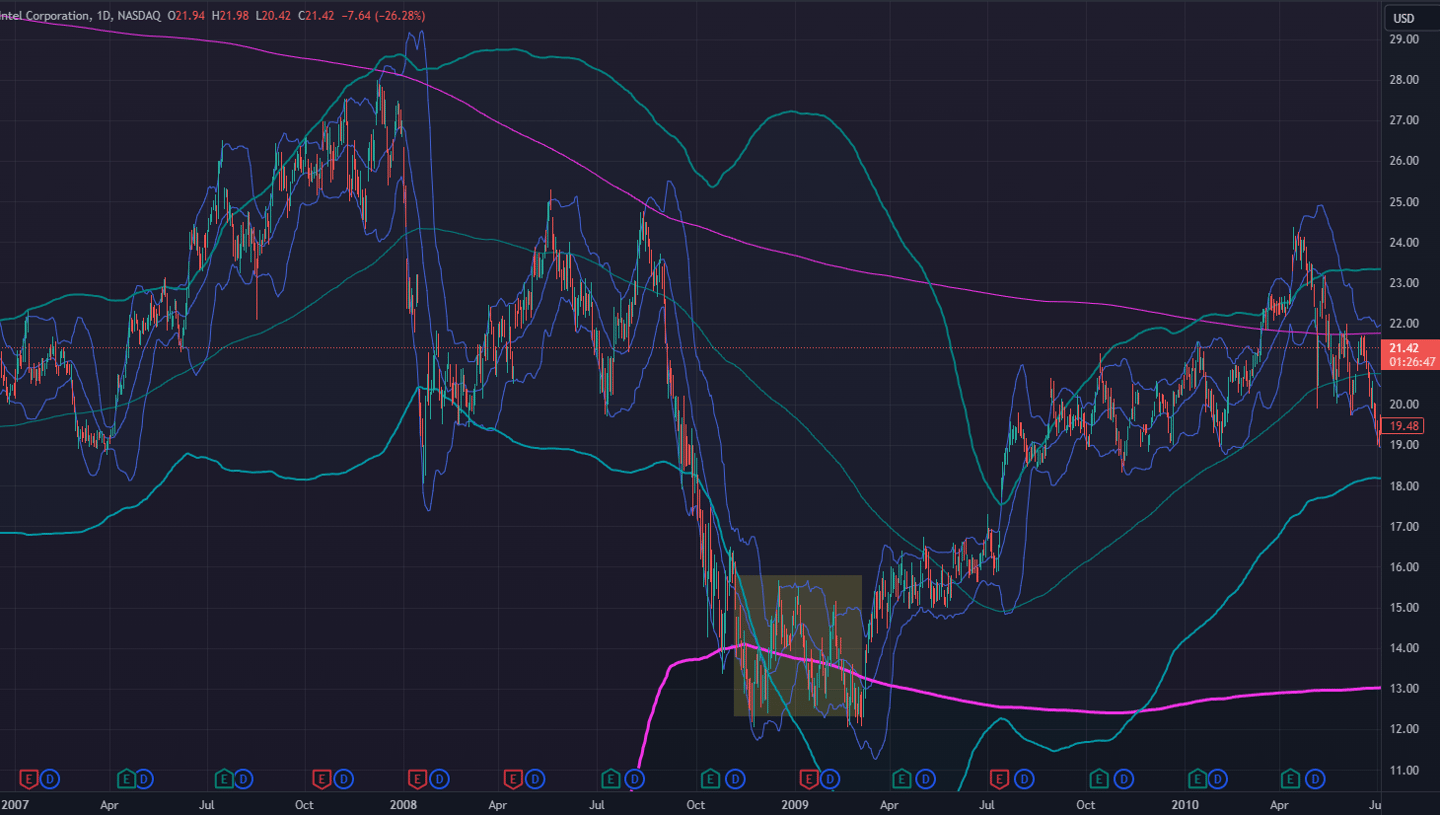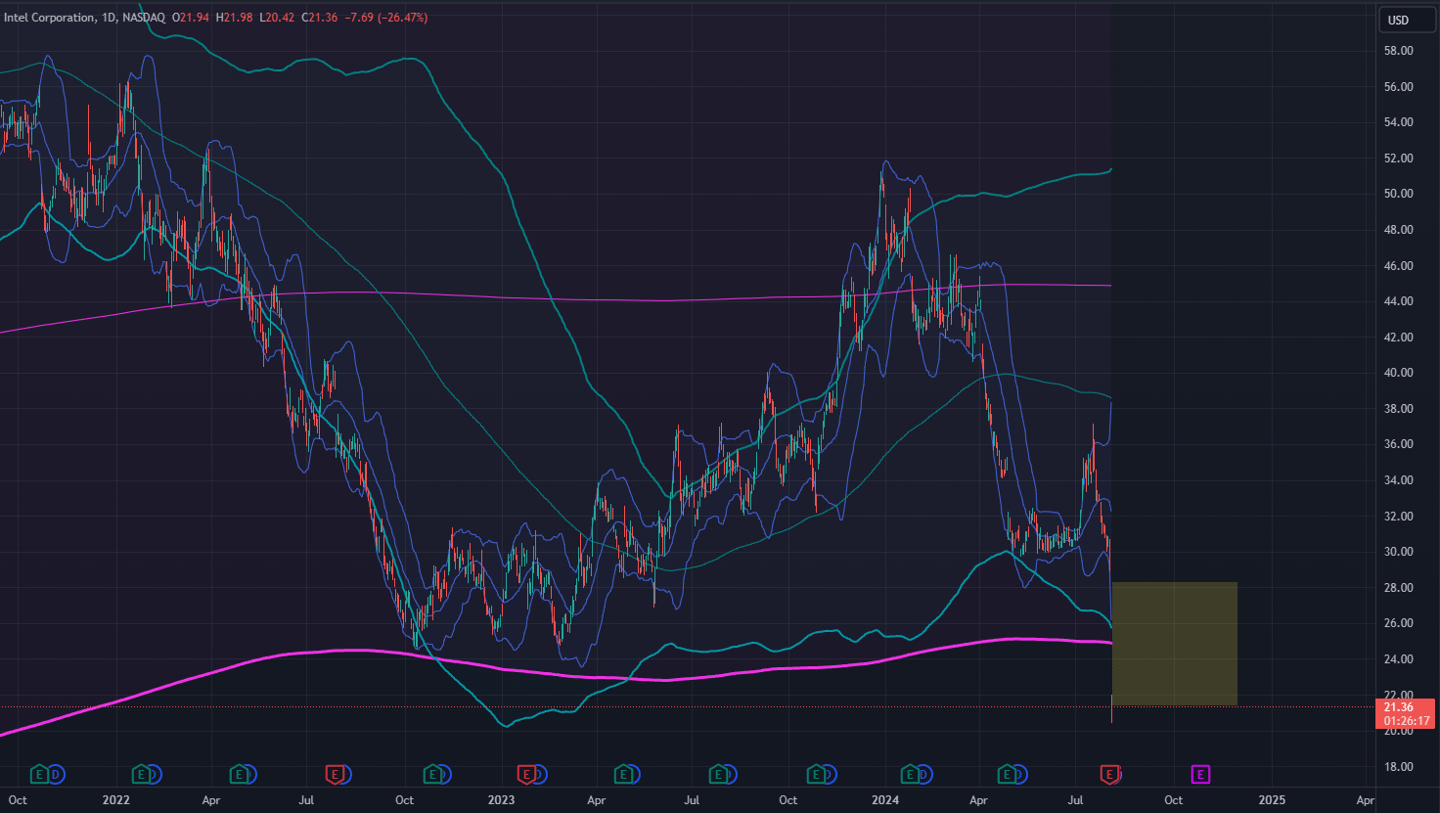Market Analysis of Intel Corporation Amidst Technical and Macroeconomic Challenges
In this insightful analysis, we delve into Intel Corporation's current market challenges and draw parallels with the significant downturn observed in November 2008. Using detailed technical indicators like the 2000-period Bollinger Bands, we explore whether Intel's recent stock price dip presents a buying opportunity amid its technical struggles and macroeconomic headwinds. The post examines the impact of chipset issues on Intel's strategic positioning and evaluates the potential for recovery in a deglobalizing chip market. This article is crucial for investors considering the timing and risks of investing in Intel amidst its current instability.
STOCK MARKETMARKET DYNAMICSINVESTMENT ANALYSISMARKET ANALYSISECONOMIC CONDITIONSINVESTMENT INSIGHTSTECHNICAL ANALYSISFUNDAMENTAL ANALYSISTECH


Intel Corporation (INTC) has recently experienced significant stock price volatility, echoing the conditions seen in November 2008 when the company's stock was similarly far below its 2000-day moving average. This historical parallel offers a noteworthy perspective, given the current macroeconomic climate and Intel's own technical challenges.
Historical Context and Current Market Position
The last time Intel's stock deviated this significantly from its 2000-day moving average was during the 2008 financial crisis, a period marked by extreme market turmoil. Observing a similar deviation today suggests that Intel might again be facing a pivotal moment, albeit under different circumstances. The current deviation raises questions about potential market reactions and the underlying causes influencing Intel's valuation.




2008
Today
Technical Indicators and Investment Considerations
The use of Bollinger Bands (20, 200, 2000 periods) helps to identify the extent of Intel's price deviation from its historical norms. The current positioning outside the lower band of the 2000-period Bollinger Bands indicates a substantial downward move, often considered an oversold condition that might suggest a potential buying opportunity. However, prudent investment strategy would advise waiting for the price to stabilize within these bands before considering a long position to avoid the risks associated with "knife catching," which can lead to significant losses if the timing is incorrect.
Macroeconomic Factors and Strategic Outlook
Intel's strategic position to capitalize on the deglobalization of the chip market initially seemed promising. This advantage has been temporarily compromised by the recent technical setbacks in their 13th and 14th generation chipsets, which have led to increased maintenance costs and reduced earnings. Despite these setbacks, the significant drop in stock price may still represent an undervalued opportunity, given Intel's potential to recover and adapt to the deglobalized market landscape.
Recent Developments and Investor Sentiment
Intel's issues with chipset oxidization and voltage were reportedly first observed about three weeks ago, aligning with a peak in stock price, which subsequently dropped sharply. This timing, coinciding with the dissemination of this information through platforms like YouTube, suggests a reactive market response to emerging technical information. The subsequent stock price adjustment may not fully account for Intel's long-term potential and recovery strategy, which could provide a strategic entry point for discerning investors.
Conclusion
For investors considering Intel, the current market conditions, combined with historical data and Intel's strategic responses to its challenges, suggest a cautious approach. Monitoring the stock's re-entry into the lower range of its 2000-period Bollinger Bands could indicate a stabilization and potential turning point. Given the volatile nature of tech stocks and the specific challenges Intel faces, any investment decision should be made with a comprehensive understanding of both technical indicators and broader market conditions.
Disclaimer:
The information provided in this article is for informational purposes only and should not be considered financial advice. Always perform your own due diligence before making any investment decisions.
